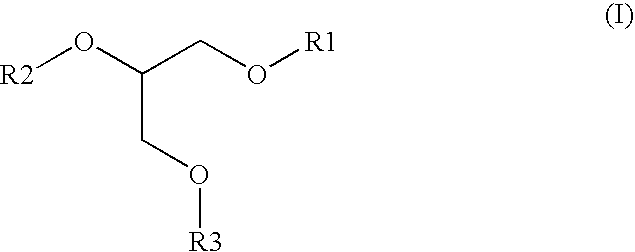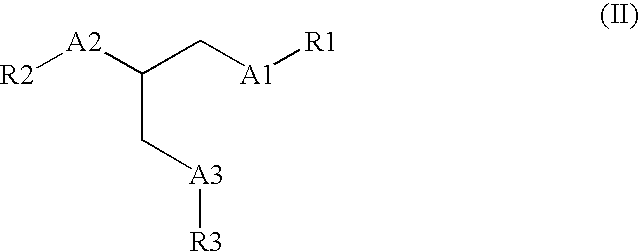Method of managing blood glucose levels, insulin levels and/or insulin receptor functionality in individuals with diabetes, polycystic ovarian syndrome and/or alzheimer's disease
a technology of insulin receptor and insulin level, which is applied in the field of managing blood glucose levels, insulin levels and/or insulin receptor functionality in individuals with diabetes, polycystic ovarian syndrome and/or alzheimer's disease, can solve the problems of inability to conceive, resistance to insulin growth factors, and ineffectiveness of conventional medications such as metformin aimed at managing type 2 diabetes and excess insulin produced by the pancreas in response to hyperglycemia in women with
- Summary
- Abstract
- Description
- Claims
- Application Information
AI Technical Summary
Benefits of technology
Problems solved by technology
Method used
Image
Examples
example 1
[0063]The following daily regimen incorporating the four components of the present invention was developed:[0064]α-lipoic acid—600 mg. tid orally;[0065]linolenic acid complex—1300 mg. bid orally (for a total per day of 25 mg. linolenic acid, 1910 mg. linoleic acid and 130 mg. gamma linolenic acid);[0066]biotin—5 mg. tid orally; and[0067]coenzyme Q-10—100 mg. bid orally.
The above formulation taken orally with or directly after meals is referred to herein as the Example 1 regimen.
[0068]The Example 1 regimen was followed by two adult males previously diagnosed with type 2 diabetes mellitus and being treated with prescription drugs, as described below in Examples 2 and 3.
example 2
[0069]A 59 year old Caucasian male 30 pounds over-weight was first diagnosed with type 2 diabetes mellitus in 1996. Treatment initially began with Metformin and Amaryl®, with dosages increasing over time. The Metformin and Amaryl® dosages were then supplemented with Lantus® injections at bedtime in increasing dosage over the next 3 years, as summarized below in Table A. By November 2006, Lantus® dosage was maximized at 55 units qd, and the patient's endocrinologist was recommending adding a fast-acting insulin at mealtime.
TABLE ADATES-all datesMETFORMINMETFORMINapproximatedosageper / dayOther1996 to 1997850mg. bid1700 mg.Amaryl ® 4 mg. qd1997 to 1998850mg. bid1700 mg.Amaryl ® mg. qdStarlix ® 120 mg. tid(discontinued after 90 days)1998 to 1999850mg. bid1700 mg.Amaryl ® 8 mg. qd1999 to 2002850mg. tid2550 mg.Amaryl ® 8 mg. qd2002 to 2004850mg. tid2550 mg.Amaryl ® 8 mg. qdLantus ® 16 units at bedtimeincreased over three years to 55 unitsat bedtime2004 thru850mg. tid2550 mg.Amaryl ® 8 mg. ...
example 3
[0071]A 58 year old Caucasian male 70 pounds overweight was first diagnosed with type 2 diabetes mellitus in 1999, after which treatment with Metformin, Avandia® and Byetta® progressed as is summarized in Table B below.
TABLE BDATES-allMETFORMINMETFORMINdates approx.dosageper / dayOther1999 to 2001500mg. bid1000 mg.2001 to 2003500mg. bid1000 mg.Avandia ® 4 mg. qd2003 to 2005500mg. tid1500 mg.Avandia ® 4 mg. qd2005 thru1000mg. bid2000 mg.Avandia ® 4 mg. qdNOV 2006Byetta ® 10 μg. bidDEC 20061000mg. bid2000 mg.Avandia ® 4 mg. qdByetta ® 10 μg. bidExample 1 regimenJAN 2007 thru500mg. bid1000 mg.Byetta ® 10 μg. bidMAR 2007Avandia ® 4 mg. qdExample 1 regimenAPR 2007 thru500mg. qd500 mg.Byetta ® 10 μg. bidJUL 2007Example 1 regimen
[0072]As can be seen above, the individual's prescription drug regimen was increasing in dosage of Metformin over the years, and upon supplementing the prescription drug program with the Example 1 regimen, over time the individual was able to omit the Avandia® and re...
PUM
| Property | Measurement | Unit |
|---|---|---|
| Mass | aaaaa | aaaaa |
| Mass | aaaaa | aaaaa |
| Mass | aaaaa | aaaaa |
Abstract
Description
Claims
Application Information
 Login to View More
Login to View More - R&D
- Intellectual Property
- Life Sciences
- Materials
- Tech Scout
- Unparalleled Data Quality
- Higher Quality Content
- 60% Fewer Hallucinations
Browse by: Latest US Patents, China's latest patents, Technical Efficacy Thesaurus, Application Domain, Technology Topic, Popular Technical Reports.
© 2025 PatSnap. All rights reserved.Legal|Privacy policy|Modern Slavery Act Transparency Statement|Sitemap|About US| Contact US: help@patsnap.com


